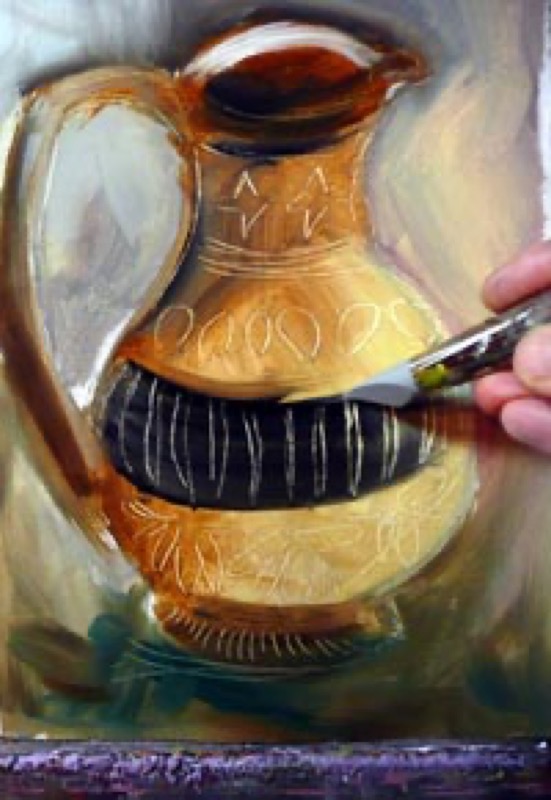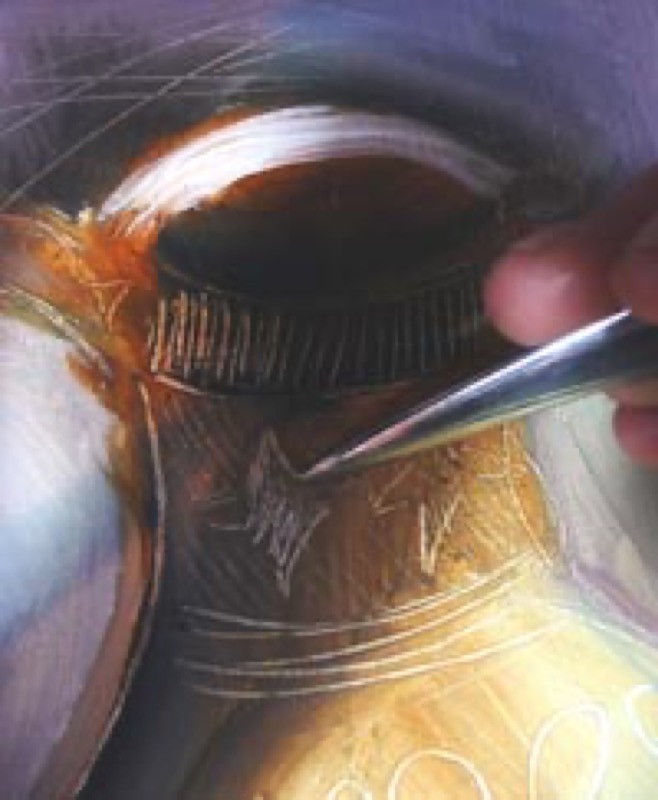Sgraffito? An odd term for such a simple technique! Use pointed objects (paintbrush handle, utility knife or comb) to carve the paint to show the support or the previous layer of paint.
- Home
- Expert advice
- Oil: Sgraffito or how to carve oil paints
What you need to know
How carved lines and patterns look depends on the thickness of the paint, how dry it is (wet or dry) and the tool used (anything and everything).

1. Carving wet paint
For representing details or precise patterns: wrinkles, hair, the pattern on a fabric or an object, ripples or light reflecting on water.
- Use a narrow tool, like a paintbrush handle or the tip of a knife.
- Carve the final coat of paint as if you were drawing.
- Wipe the tip of your tool regularly with a rag to keep the paint from accumulating.

2. Carving dry paint
You can scratch dry paint with a very pointed object, such as a utility or palette knife.
The process is the same as for wet paint, but with very different results. When you scratch, you remove all the layers of paint and the support is what shows. It is therefore advisable to use:
- a support with a white background (primed with gesso or an acrylic coating) for excellent contrast;
- a rigid support (panel, plywood) so it doesn’t tear while scratching.
Sgraffito is often used on dry paint to define the contours and patterns on objects (in a still life, for example) or to add relief to a color block background.
Recommended product:
Figueras®
See also :
Oil painting
Oil: Touching up
Explore more tutorials on this technique
Oil painting
Learn how to paint a parasol pine at sunset
Oil painting
Making Watercolor Paint, Oil Paint, and Gouache
Oil painting
Paint and Draw Outdoors
Oil painting
Drawing: Secrets of perspective
Oil painting
Color Basics
Oil painting
Oil portrait for A. Karin / Part 2
Oil painting
Oil portrait for A. Karin / Part 1
Oil painting
A street in the Mediterranean - oil painting
Oil painting
Oil: Doing collages
Oil painting
Oil: Working with different textures
Oil painting
Oil: Touching up
Oil painting
Oil: Painting with a pad
Oil painting
Oil: Finger painting
Oil painting
Oil: Preparing a support
Oil painting
Oil: Glaze painting
Oil painting
Oil: Creating impastos
Oil painting
Oil: Still life, coffee mug
Oil painting
Oil: Palette knife seascape
Oil painting
Oil: Cleaning and maintaining your materials
Oil painting
Oils: Manufacturing secret
Oil painting
Preparing your material for painting with oils
Oil painting
Choosing oil painting accessories
Oil painting
Choosing colours for oil painting
Oil painting
Selecting a support for painting with oils
Oil painting
Basic concepts for painting with oils
Oil painting
Oil painting: preparing colors
Oil painting
6 steps to learn how to do oil painting
